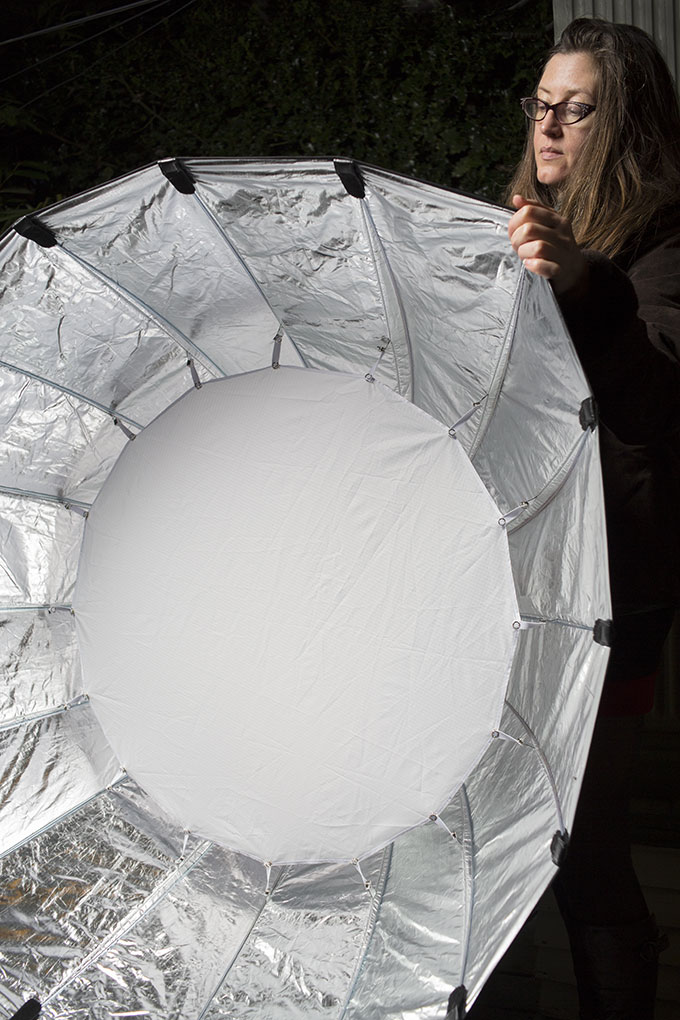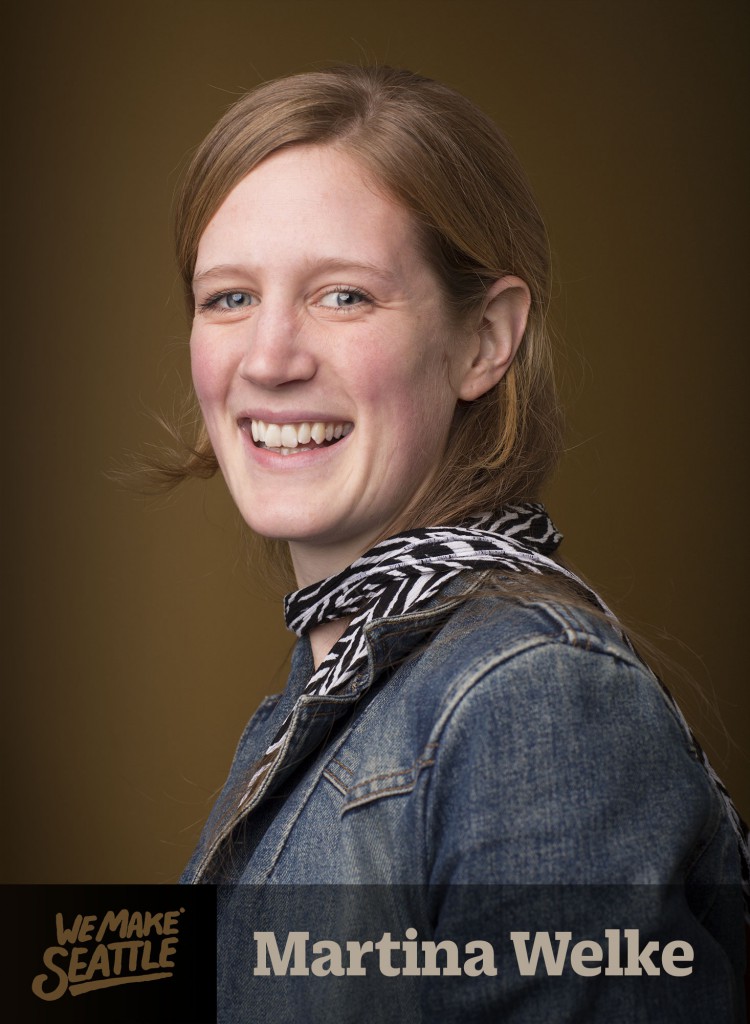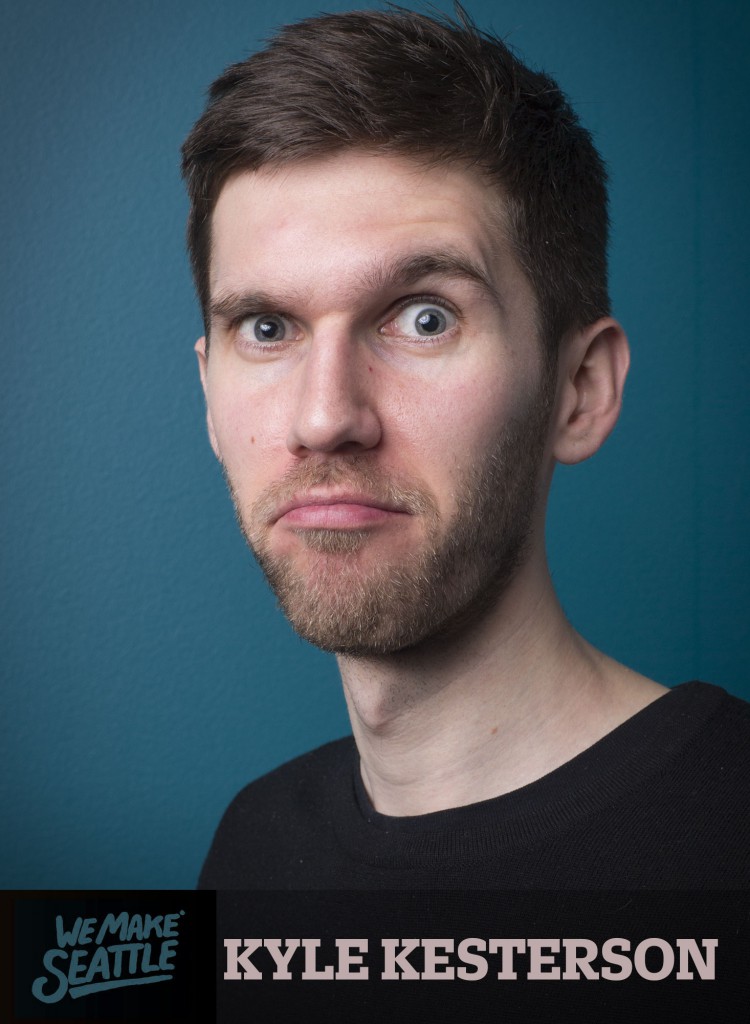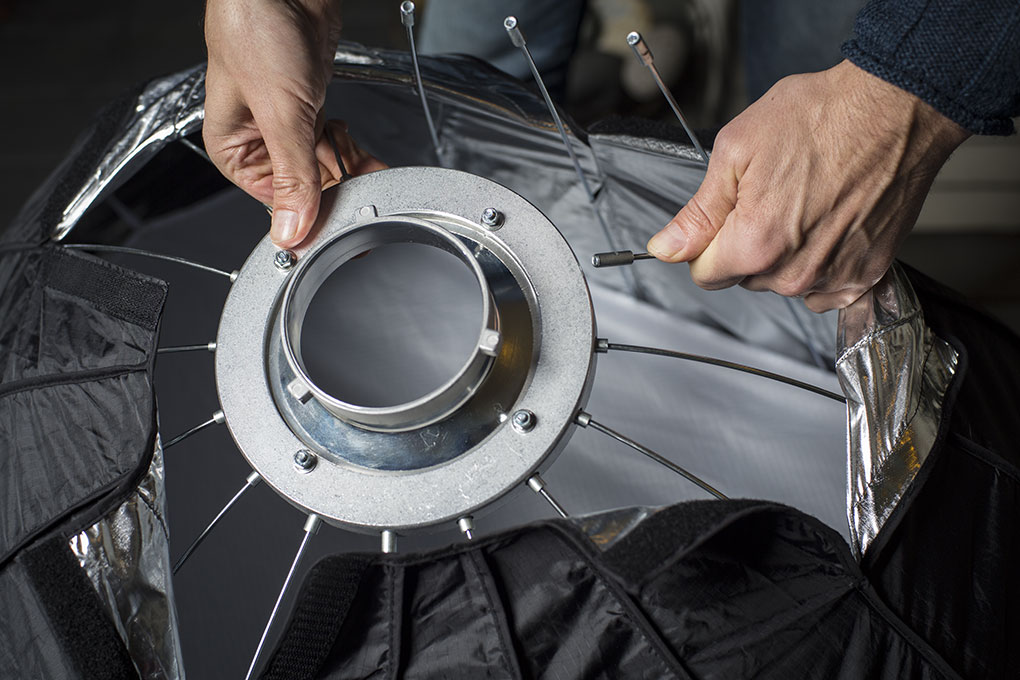It’s the bread and butter of location photography: the one-light portrait. There’s a million ways to get it right–and a million ways to get it wrong. I’ve discovered one way of pushing the odds heavily into your favor. It’s called the Glow 47″ Grand Softbox.
Small enough to take on location, yet big enough to flood a whole room with light, the Grand is an extremely forgiving and totally flattering way to make a portrait when you don’t have the bandwidth to deal with more than one light. Let me explain.
 I’m currently working on a short doc called We Make Seattle. My primary role at this stage is to record sound only during the early interviews. Additionally, I’ve been tasked with getting a still of each participant. Should be easy to do both, right?
I’m currently working on a short doc called We Make Seattle. My primary role at this stage is to record sound only during the early interviews. Additionally, I’ve been tasked with getting a still of each participant. Should be easy to do both, right?
It’s possible, but it’s not easy. There’s a reason why you most often find a sound recordist and a still photographer occupying two different bodies. Even though you may be able to do a great job in either role, being asked to do both in rapid sequence is a potential disaster if you care about quality. You have to use very different gear, and approach each creative challenge with a different set of eyes (or, um, ears).
To do both well, I recommend cheating. And the way I’ve learned to cheat on the photo side is to pack a light modifier that does most of the thinking for me: the parabolic 47″ Grand Softbox.
What do all of the following portraits have in common? They were all made with just one light. The subject and the background and the fill side are all being illuminated by the same source.
Parabolas punch out a special quality of light that a soft box can’t quite match. It’s hard to describe it exactly, but I’ll take a stab at it.
The first thing that’s so great is that it’s big. So you don’t have to occupy your brain with whether the subject is in the sweet spot of the light. You can focus on getting a good performance out of your subject rather than niggling with the technical stuff. Light it, shoot it, and forget about it.
Another benefit of using this light is that it focuses and propels the light further than a soft box. A parabolic reflector puts out “collimated light,” which means will travel farther, and more evenly. Add to that the fact that the 47″ box is BIG, and you begin to see why you can do no wrong with this source. If you place it close to your subject, it both keys them and wraps around to fill them.
Finally, using a parabolic reflector produces a signature round catchlight. Notice the eyes:
In many portrait situations, I think this feels more organic than a box catchlight. Less artificial. Less square. It’s a small thing, but photographs are all about details, aren’t they?
The Grand includes a Bowens-type speedring. A large variety of other types of speed rings are available separately. I think supporting Bowen’s style light modifiers was a great choice, because they are ubiquitous at rental houses and among the most affordable professional monolights.
With 16 spokes, it’s a bit of a challenge the first time you fit the Grand on a speed ring. Here’s a tip: don’t insert one spoke after another. Instead, after seating the first spoke, grab one approximately 180 degrees on the opposite site, and fit it into place. Don’t worry if it’s in the right spot – just seat it temporarily to hold the shape as you work your way around sequentially.
A minor irritation about this light is the fitted external diffuser, which you have to stretch over the tips of the box to attach. It’s held in place with elastic fabric inside the stitching, not velcro, so it’s easy to ALMOST get the diffusion on, only to have it come tumbling off before you complete the stretch into place. I’d rather focus my creativity on making the picture, than on assembling the light diffuser. A little velcro on every other fit point would resolve this.
The build quality is excellent, as I would expect for a big soft box that will set you back nearly $250. It’s heavy enough that you need a medium- or heavy-duty monolight to support it. Lightweight monolights with plastic stand receivers, such as the Flashpoint 180 monolight which I tested it with, simply aren’t strong enough to support the weight of the 47″ Grand. But a 10-lb shot bag is enough to anchor your light stand in normal shooting conditions.









Hi Dan. Another modifier you might want to look at if using strobe (not hot lights) is the Photek Softlighter II. It comes in three sizes, 36″, 46″, and 60″ and is a lot easier to set up. It is basically a 10-rib umbrella with a diffuser. The 60″ one does use velcro. The smaller ones do not. It is available with a 7mm or 8mm shaft. The 8mm shaft screws apart in the middle so you don’t have the shaft sticking out of the lamp head so you can move the light in very close. And the price is around $120. It gets you around having to set up the speeding.
Love the light!
John
Hi John, thanks for the tip on the Softlighter. I love umbrella-style light modifiers, because they are so easy to set up. And for that price? Done!
Is this something that you’d do on video as well? Maybe with a fresnel?
Pingback: Flashpoint 180 Monolight is a low-budget cord cutter | Dan McComb